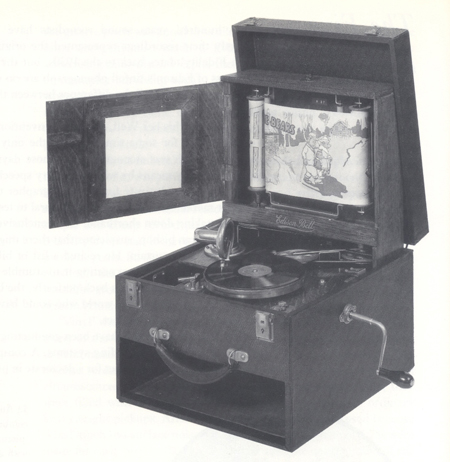
The Edison-Bell picturegram from 1927 (in Sound Recordings). The toy illustrates the convergence of sound and image.
As the budding audio recording industry was creating use value by advertising the phonograph alongside writing machines, pens, pencils, and cameras, another convergence was happening as well. The motion picture industry, which developed concurrently with the audio recording industry, sought to synch up the sights and sounds of the body. Talking, singing, dancing, fighting, and falling had been standard in the motion picture industry since it began, but these bodily acts happened silently on screen. It was only a matter of time before the body would be audible on screen.
Recent comments
2 years 29 weeks ago
2 years 44 weeks ago
2 years 44 weeks ago
2 years 50 weeks ago
3 years 4 weeks ago
3 years 4 weeks ago
3 years 4 weeks ago
3 years 6 weeks ago
3 years 6 weeks ago
3 years 6 weeks ago